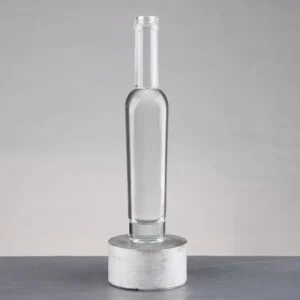There is a wide range of liquor bottle sizes available for alcoholic beverages. Distillers, bottle shops, and customers would all benefit from knowing the standard sizes of liquor bottles. Keeping stock of liquor requires a lot of calculation.
You must know how many ounces 750 milliliters is. How many ounces are there in 1.75 liters, anyway? How many shots does a pint of liquor contain?
With the right information, you can maintain stock levels and do precise inventory counts. And we’re happy to assist you since we take care of our liquor bottle stock. Here, we are listing and explaining standard bottle measurements for alcoholic beverages. We also included a conversion chart for you to use between ounces, milliliters, and shots!
What Are the Common Sizes and Dimensions Available in Liquor Bottles?

There is a wide range of alcohol bottle sizes available. One-fifth of a gallon, or 750 milliliters, is the usual serving size. Aside from 50 ml and 100 ml, other frequent sizes include 200 ml, 375 ml, 1L, and 1.75L.
You might spend a lot of time working with the typical and similar-sized items. However, larger bottles eventually find a home at specialist bars and eateries that provide something really remarkable. You can save money with them, and they also make nice displays.
What Are the Most Common Sizes Available in Liquor Bottles?
Maintaining a drink menu close by while stocking the bar’s or store’s shelves is a must. You may know your list inside and out after some time in business, but it’s always helpful to have a list on hand. Using typical bottle sizes like a fifth or handle is quite helpful since you can do measurements in your mind rather than pulling out a calculator.
1) Beer
Bigger bottles and taller beer glasses reflect beer’s reduced alcohol level compared to other liquors. There are numerous sizes available in this category, but 12 ounces is the norm for a long-neck or tiny bottle.
The volume of a growler of beer is around 64 ounces, whereas the capacity of a pony is just 7 ounces. The usual British bottle can hold 16.9 ounces. However, there is a wide range of sizes available for other countries’ beers as well. For shotgun beers, you’ll want to stock a 12-ounce can.
2) Pint
It is a common size for individual liquor bottles or cocktail shakers. It can hold 473 milliliters (16 ounces) of liquor.
3) Fifth
Wine and liquor commonly come in bottles holding a fifth of a gallon. It’s the most practical size for a bar, coming in at 750 ml. Some people also recognize them as commercial quarts since it is an older name for these bottles.
4) Half Gallon
A half gallon, often known as a handle, is equal to 59.2 ounces, or 1.75 liters. You won’t find many bars stocking bottles with a capacity of 39 shots. When serving beer, this is also the standard pitcher size.
5) Handle
One of the most common bottle sizes in the United States for alcoholic beverages is 1.75 liters. It is sometimes known as a handle-sized bottle. This 60-ounce bottle is roughly equivalent to half a gallon.
What Are the Less Common Sizes Available in Liquor Bottles?
Here is a list of the most unusual bottle dimensions you might encounter when stocking your bottle store or bar. If you expect your business to grow through the beverage industry in time, the bigger quantities can be better for filling the stock. However, the bigger sizes explained here are often impractical for a bar.
1) Nip
Nip bottles, sometimes known as mini bottles, contain 50 ml of alcohol. That’s around one 1.5-ounce shot and 1.7 ounces total. Nips are widely available in supermarkets and bottle shops alike. Since they aren’t a convenient or affordable way for most consumers to purchase alcoholic beverages, restaurants, and nightclubs don’t stock them.
2) Half-pint
A half-pint bottle of liquor, on the other hand, holds more than a quarter of a real pint. The size, however, is double that of a typical bottle of quarter-pint liquor. 200 milliliters, or 6.8 ounces, is equal to a half-pint. There are around four 1.5-ounce shots in a half-pint bottle.
3) Balthazar
This bottle is named after another Babylonian monarch. The Balthazar holds 12 liters, or around 16 bottles of wine, at a normal capacity. Since this size bottle is often reserved for wine storage, you can keep several on hand only if you expect to sell them up soon.
4) Magnum
There are two common sizes of alcoholic beverage containers: the liter (1L) and the handle (1.75L). 1.5 liter (50.7 ounces) bottles of liquor are known as magnums. There are around 34 shots of 1.5 ounces each in a magnum bottle. It’s a staple for home bars and special occasions.
5) Demi
The US average bottle size is smaller than the European Union norm. The demi clearly describes this difference. This liquor bottle size is equal to a pint in the European metric system. It can carry 11.8 ounces, or seven shots, making it 350 milliliters in capacity.
However, a demi is equivalent to around half of a normal EU spirit bottle, which is the equivalent of a metric quart in the United States.
Liquor Bottle Sizes Chart:
| Liquor Bottle Size | Shots Size | Ounces | Milliliters |
| Pint
|
10.5 shots | 16oz | 473ml |
| Fifth
|
17 shots | 24.36oz | 750ml |
| Half Gallon
|
39 shots | 59.18oz | 1750ml |
| Nip
|
1 shot | 1.7oz | 50ml |
| Half-pint
|
6 shots | 6.8oz | 200ml |
| Balthazar
|
270.5 shots | 405.77oz | 1200ml |
| Magnum
|
33 shots | 34.15oz | 1500ml |
Why Are Miniature Bottles Trending in Liquor Packaging?
Smaller bottles include 50 ml of vodka, whiskey, gin, or any spirit of your choice. Brand owners of alcoholic beverages often utilize little bottles when releasing new products to entice consumers to give them a try. This little glass bottle is a convenient option for passers-by who don’t want to invest in a case of 750 ml bottles.
- Great for Collection: Miniature bottles may be a fun pastime or decorative accent for some individuals.
- Gifting: Miniature bottles are often used as presents or return gifts since they are inexpensive and provide a novel way to deliver a selection of alcoholic beverages.
- Excellent Option While Traveling: When going on a vacation, these little bottles of liquor are a great choice since they take up so little room in the luggage.
- Great for Sampling: Small bottles are great for product selection, particularly in bars and during trade shows.
Why Do Different Sizes of Liquor Bottles Matter?
When stocking and ordering liquor bottles for your store or bar, it is crucial to be familiar with the most frequent and unusual bottle sizes for alcoholic beverages. It’s important to think about not only how long a bottle will stay open but also how popular it is likely to be.
Of course, different software exists that can help you keep tabs on stock and make orders with little effort in various situations. Using this program may assist you in avoiding losing money due to supply spoilage.
Having the correct liquor bottle sizes is of paramount importance while doing any of the following tasks:
- Updating supplies
- Decorating your store or bar shelves
- Fulfilling the varying needs of consumers
It will be much simpler to manage your stock if you are familiar with the alcohol capacity of each bottle.
FAQs:
1) What Is the Largest Liquor Bottle Size Available in the Market?
The rehoboam, equal to around 152.2 ounces, is the biggest bottle of alcoholic beverage commercially available. It can hold around 102 shots (one serving size) of liquor.
2) Does the Aging of Spirits Depend on the Size of the Bottle?
Smaller bottles often age faster than larger ones because of the greater spirit-to-air ratio within. Perhaps larger bottles can go old more slowly.
3) Are There Universally Accepted Bottle Sizes for Liquor Bottles?
Bottle sizes of alcoholic beverages may differ from one location to another. Even though there are standard bottle dimensions, packaging laws vary by country.
4) What Amount Is Less Than a Fifth?
A pint is the next-smallest bottle size, down from a fifth. Liquor bottles often come in fifths, the most popular size after 1 liter. Pints are normally 473 ml in capacity, which is much less than the conventional liquor bottle size (750 ml).
5) Should You Stock Mini Liquor Bottles?
Yes, you should stock mini liquor bottles along with different-sized bottles of liquor. Earlier, we saw that a small liquor bottle is a reference to a 50ml bottle. Samples, giveaways, and keepsakes are just some of the many uses for these little bottles. Tourists and those who just wish to have a few sips at a time without buying a whole bottle use these smaller containers.
Final Thoughts!
It’s helpful to be aware of different sizes of liquor bottles. It helps while keeping inventory and placing orders for the entire bar liquor list. When your inventory is well-organized, you’ll have more time and energy to devote to other aspects of your business.
Bottle sizes also help you understand the appropriate box size for your liquor bottles, which makes shipping much simpler. If you’re sending alcoholic beverages, that’s a useful piece of information to have.
High-quality glass bottles provide class, coolness, and aesthetic appeal to your liquor and beverage business. The glass bottles you use to sell your beverages speak a lot about your brand and the quality of your product.
If you want to place an order for liquor bottles of varying sizes, make sure you contact Ruisheng Glass. Customized glass bottles and exceptional personalizing services are two of our specialties as a spirit bottle producer.
